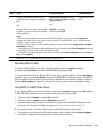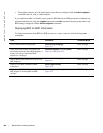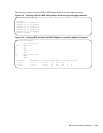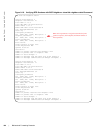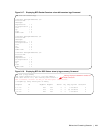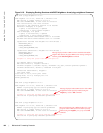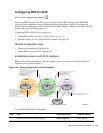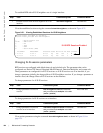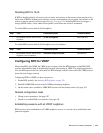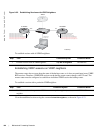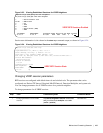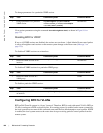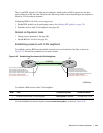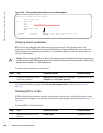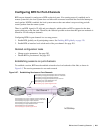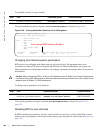
Bidirectional Forwarding Detection | 195
Disabling BFD for IS-IS
If BFD is disabled globally, all sessions are torn down, and sessions on the remote system are placed in a
Down state. If BFD is disabled on an interface, sessions on the interface are torn down, and sessions on the
remote system are placed in a Down state (Message 3 on page 179). Disabling BFD does not trigger a
change in BFD clients; a final Admin Down packet is sent before the session is terminated.
To disable BFD sessions with all IS-IS neighbors:
To disable BFD sessions with all IS-IS neighbors out of an interface:
Configuring BFD for VRRP
When using BFD with VRRP, the VRRP protocol registers with the BFD manager on the RPM. BFD
sessions are established with all neighboring interfaces participating in VRRP. If a neighboring interface
fails, the BFD agent on the line card notifies the BFD manager, which in turn notifies the VRRP protocol
that a link state change occurred.
Configuring BFD for VRRP is a three-step process:
1. Enable BFD globally. See Enabling BFD globally on page 176.
2. Establish VRRP BFD sessions with all VRRP-participating neighbors.
3. On the master router, establish a VRRP BFD sessions with the backup routers. See page 195.
Related configuration tasks
• Change session parameters. See page 197.
• Disable or re-enable BFD on an interface. See page 182.
Establishing sessions with all VRRP neighbors
BFD sessions can be established for all VRRP neighbors at once, or a session can be established with a
particular neighbor.
Step Task Command Syntax Command Mode
1 Disable BFD sessions with all IS-IS
neighbors.
no bfd all-neighbors
ROUTER-ISIS
Step Task Command Syntax Command Mode
1 Disable BFD sessions with all IS-IS
neighbors out of an interface
isis bfd all-neighbors disable
INTERFACE



